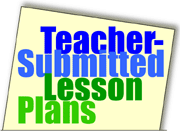Describe One Specific Thingobject That Is Funny

Subjects
- Language Arts
- Visual Arts
Grades
- 3-5
- 6-8
- 9-12
Brief Description
Students create “life†maps†of their lives. They use their life maps as graphic organizers for writing their autobiographies.
Objectives
Students
- create a life map to use as a graphic organizer for writing an autobiography.
- understand and use pictures (symbols) to represent events and goals in their lives.
Keywords
writing, autobiography, graphic organizer, timeline
Materials Needed 
- a sheet of white drawing paper
- colored pencils, markers, and other drawing supplies
The Lesson
In my class, I use this "life map" activity as a prewriting exercise. My students' life maps serve as graphic organizers that they use as they write their autobiographies. This activity could also be used successfully as a standalone activity.
Before the Lesson
You might prepare a sample "life map" that illustrates your own life. A life map is a series of symbols that represent important things/events or goals in your life.
On my life map, I drew a set of bells to represent the day I got married. I drew an apple to represent day I became a teacher
In other words, a life map is a "symbol timeline" of your life. There are no words on a life map -- just pictures/symbols and arrows. Arrows connect the symbols in the sequence they happened in your life.
If you create a life map of your life you will be able to share it with students; it will serve as a model they can use as they create their own life maps.
Teaching the Lesson
As mentioned above, I use this lesson as a prewriting exercise to having students write their autobiographies. For that reason, I have already read aloud to students a couple autobiographies so they understand the concept of an autobiography. You might begin this lesson by reading aloud an autobiography, or a chapter from one.
Talk about some of the important events that the author shared in the autobiography about his or her life.
Discuss with students the kinds of important events that they might tell about if they were to write their autobiographies. Have students share those "most memorable" or "most important" events from their lives. Write the events on a sheet of chart paper as students call them out. Some of the events students might share include
Once you have a list (at least 15-20 ideas is good), review the list with the students and talk about a picture or symbol that might represent each of the events that has been shared. For example
Next, have students come up with eight (the number might vary by grade level) "most important" events in their lives. They can draw from the list they and their classmates created, or they can use events that were not shared before. Then students need to decide on the eight symbols that represent their chosen events on their life maps. Encourage students to choose a variety of events/symbols. The events should span their lives and the symbols should represent a variety of accomplishments, interests, activities, and experiences. Students might draw their symbols, cut the symbols out of magazines, search online for an illustration that can be used as a symbol, take a photograph All that appears on the students' life map are
- their names,
- their symbols, and
- arrows to connect those symbols in the order they happened.
When students have created their life maps, you might set aside time for them to share them with their classmates.
Students' life maps can serve as a graphic organizer they can use as they write their autobiographies. Each event/symbol will serve as a "chapter" in their autobiography. That symbol can also appear as an illustration for that chapter in their book. The chapters follow the sequence of events in their lives/life maps.
Assessment
Did students- follow directions?
- choose a variety of events and symbols to represent important moments in their lives?
- take care in creating their life maps? Were illustrations neatly drawn?
- do a good job writing their autobiographies?
Submitted By
Lindsay Bigham, Liberty Middle School in Liberty, South Carolina
Education World®
Copyright © 2006 Education World
Originally published 08/29/2005
Last updated 11/01/2006
Â
Source: https://www.educationworld.com/a_tsl/archives/05-1/lesson023.shtml
0 Response to "Describe One Specific Thingobject That Is Funny"
Post a Comment